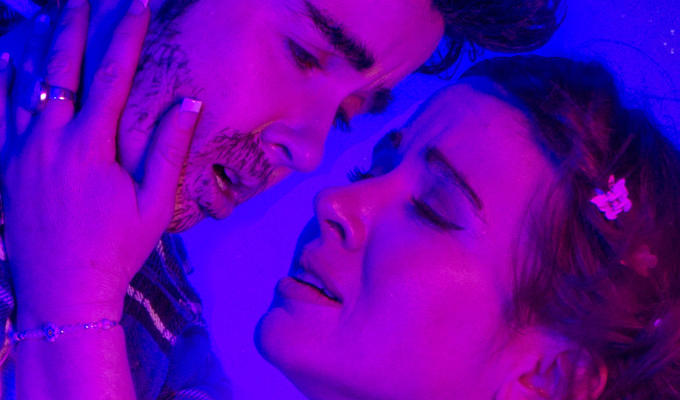Bridget Christie: My Daily Mail Hell - Fringe 2009
Note: This review is from 2009
Review by Steve Bennett
Bridget Christie’s fourth solo Edinburgh show probably isn’t what anyone expected.
A third of the audience appear to be Daily Mail readers, confused by the early, offhand references to its reputation for racism among the typical left-leaning festival-goers. Another third probably wanted some vitriolic diatribe about the paper’s political stance; while any fans Christie’s previous absurdist work would have left baffled why they were just seeing her talking without dressing in historical garments and re-enacting the defining events of the Stuart era.
This is, indeed, a return to staright(ish) stand-up, covering the years she accidentally found herself working on the diary column of Britain’s most contentious newspaper, after taking on an agency job as an administrator and tea-maker.
When the department found itself short of real journalists, Christie was dispatched to London’s celebrity party circuit to see what snippets she could glean for the column. It means she got to meet BBC political editor Nick Robinson on Sir Clive Sinclair’s balcony – every young girl’s dream – be throttled by a humourless Gene Wilder and witness BBC executive Alan Yentob fall of a plastic chair.
Not the stuff of headlines you might think, but in the hands of the paper’s spin-meisters, that Yentob story became a page lead, and another excuse to skewer the old enemy, the BBC.
There’s similar exaggeration in this show’s title, My Daily Mail Hell. Christie didn’t really mind working there, but she found amusement in the mundanities of celebrities lives that filled the page. There is something quite subtly tragic in her account of how attention-whore Darius from Pop Idol was so desperate to get even the most trivial of exposure.
The feel of the show is pretty much like the feel of a diary page – largely inconsequential tit-bits that nonetheless provide harmless entertainment. The wide-eyed Christie is an engaging raconteur, and the show is impressively packaged, using a Jack Vettriano painting as a metaphor for her own experiences, and several other theatrical and storytelling flourishes to keep things interesting. The legal postscript is a specialy nice touch, clarifying what’s fact and fiction.
And Jack Vettriano? Bridget’s met him, too, you know. Friend to all the stars…
Review date: 23 Aug 2009
Reviewed by: Steve Bennett








